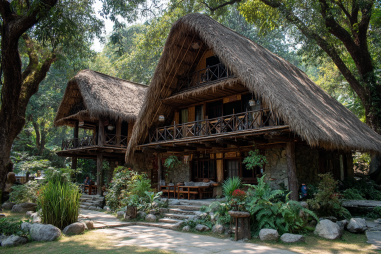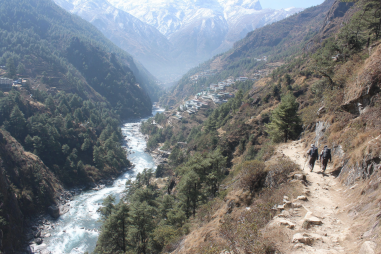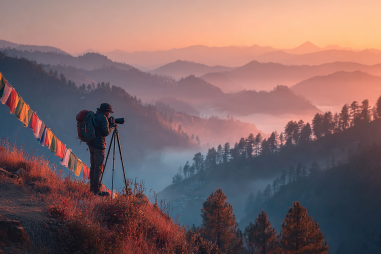Nepal’s Chitwan National Park is not just a haven for majestic rhinos and elusive tigers; it is also a paradise for bird enthusiasts. Nestled in the Terai lowlands, Chitwan offers an incredible diversity of avian species with its dense forests, open grasslands, and winding rivers. Bird watching tours in Chitwan invite you to immerse yourself in the spectacular variety of birds that call this region home or pass through during migration. Whether you are a seasoned birder or a casual nature lover, exploring Chitwan’s rich birdlife is an unforgettable experience.
Overview of Bird Watching in Chitwan
Chitwan National Park, recognized as a UNESCO World Heritage Site, boasts over 500 species of birds recorded within its boundaries. The park’s mixture of sal forests, riverine habitats, and wetlands creates an ideal environment that supports a wide array of birds. From small colorful kingfishers and bee-eaters to elusive hornbills and majestic raptors, every bird watcher finds something to marvel at here.
The bird watching season generally runs from October to May, when migratory birds flock to the region, enhancing the diversity you might encounter. Early mornings and late afternoons are prime times for spotting birds, as these are periods of heightened activity. Trekking trails, riverbanks, and grasslands across the park provide excellent vantage points to observe birds in their natural surroundings.
Local guides are specially trained to help visitors identify species, understand bird behavior, and navigate the best locations within the park. The combination of biodiversity and professional guidance makes Chitwan a top destination for bird watching tours in Nepal.
Choosing the Right Bird Watching Tour
Selecting the perfect tour can greatly enhance your bird watching experience in Chitwan. There are various tour options available, each designed to cater to different interests and skill levels, from beginners to expert birders. Here are some factors to consider when choosing your tour:
- Tour Duration: Some tours are short day trips, while others span several days and offer comprehensive exploration of diverse habitats within and around the park.
- Group Size: Smaller groups provide a more intimate experience and less disturbance to wildlife, whereas larger groups may offer more social opportunities.
- Guides: Experienced bird watching guides with deep knowledge of local species, migratory patterns, and bird calls are invaluable. Look for tours that emphasize expert guiding services.
- Customization: Some tours offer customized itineraries based on your preferences, such as focusing on rare or endemic species or combining bird watching with other nature activities.
- Equipment Provided: While some tours provide binoculars and spotting scopes, others expect participants to bring their own. Clarifying this beforehand helps you prepare properly.
Popular tour operators often include visits to lesser-known bird hotspots like the Rapti River corridor and the buffer zones surrounding the park. Checking reviews and asking questions about the itinerary and what’s included can ensure you pick a tour that suits your needs.
Notable Bird Species and Migratory Patterns
Chitwan is home to a dazzling variety of bird species, spanning several families and habitats. Here are some highlights you should look out for during your adventure:
- Bengal Florican: One of the park’s most iconic and critically endangered birds, this large grassland bird is a prized sighting during the dry season.
- Great Hornbill: These impressive medium-sized birds with their stunning casques are often spotted in the dense forests.
- Pied Hornbill: Easily recognizable by their large, curved bills, these hornbills add a splash of color to the forest canopy.
- Streaked Fantail Warbler: A charming warbler with distinctive patterns, commonly found flitting amongst trees and shrubs.
- Various Kingfishers: Including the White-throated Kingfisher with its brilliant blue plumage, these birds are often spotted near water.
- Painted Stork and Asian Openbill: Frequent visitors to wetlands, these storks and openbills are magnificent when seen in their flocks.
The park’s geographical location on migratory flyways means you can witness seasonal visitors like the Demoiselle Crane, which arrives in winter, and several species of ducks and waders. Understanding these migratory patterns can help optimize your timing and expectations for the tour.
What to Bring and How to Prepare
Preparing well for your bird watching tour ensures comfort and maximizes your chances of success in spotting elusive species. Here’s a checklist to guide your packing and preparation:
- Binoculars: A good quality pair will make all the difference when observing birds from a distance.
- Camera with Zoom Lens: For those who want to capture your sightings, a camera with a telephoto lens is ideal.
- Field Guide Book or App: Bringing a bird identification guide for Nepal helps you track and learn about the species you encounter.
- Comfortable Clothing: Wear neutral-colored, lightweight, and breathable clothes to blend into the environment and stay comfortable in varying weather.
- Sun Protection: A wide-brimmed hat, sunglasses, and sunscreen protect against the tropical sun.
- Insect Repellent: Essential for protecting against mosquitoes and other insects.
- Water and Snacks: Staying hydrated and energized during long walks is important.
- Walking Shoes: Choose sturdy footwear suited for uneven terrain.
Additionally, it’s useful to reach out to your tour operator beforehand to ask about any specific recommendations related to timing, weather, or local customs. Bringing an open mind and patience will also serve you well when observing shy or rare species.
Responsible Bird Watching Practices
As you embark on your bird watching adventure, it’s important to remember that your presence in these natural habitats impacts the wildlife. Practicing responsible birding ensures that birds remain undisturbed and habitats preserved for future generations. Here are some principles to keep in mind:
- Maintain Distance: Use binoculars or zoom lenses rather than approaching birds closely, which can stress or scare them away.
- Minimize Noise: Speak softly and avoid sudden movements to reduce disturbance.
- Follow Guidelines: Respect park rules, stick to designated trails, and heed advice from guides.
- Avoid Flash Photography: Flash can disorient birds and interfere with their feeding or breeding behavior.
- Leave No Trace: Take care not to litter or damage vegetation. Carry out all waste.
- Support Conservation: Consider contributing to local conservation initiatives and patronizing eco-friendly tour operators.
Adhering to these practices enriches both your experience and the well-being of Chitwan’s vibrant bird community.
Enhancing Your Birding Adventure
Exploring bird watching tours in Chitwan opens a window to one of Nepal’s most enchanting natural treasures. Beyond the thrill of spotting rare and colorful birds, these tours offer a chance to connect deeply with nature and local culture. Combining bird watching with other activities like canoeing on the Rapti River or visiting Tharu villages can add rich layers to your journey.
Whether you’re equipped with a seasoned birder’s expertise or simply curious to discover Nepal’s avian wonders, Chitwan offers a welcoming, diverse, and inspiring environment. With good preparation, the right tour choice, and a respectful approach, your bird watching experience here will not only be memorable but also meaningful. Embark on your Chitwan bird watching tour and discover the fascinating chorus of the wild that sings inconspicuously through its forests and grasslands.







